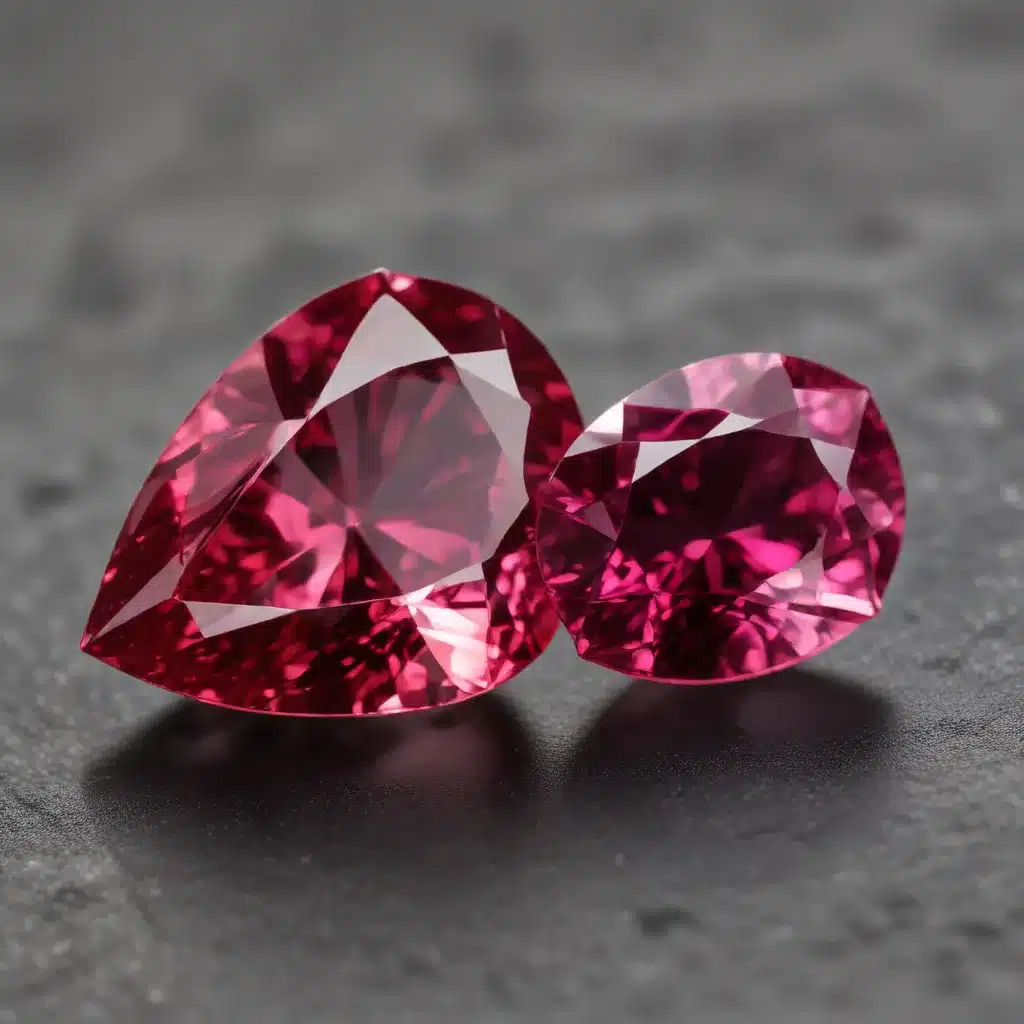
For centuries, the ruby has captivated humanity with its mesmerizing crimson hue and unparalleled durability. This precious gemstone, composed of aluminum oxide with trace amounts of chromium, has long been treasured for its rarity and allure. However, the gemstone landscape has evolved dramatically in recent decades, as the rise of synthetic rubies has revolutionized the industry.
Crystalline Structure of Ruby
At the heart of a ruby’s captivating beauty lies its unique crystalline structure. Rubies belong to the corundum family of minerals, which crystallize in the trigonal system. This specific arrangement of atoms grants rubies their signature hexagonal crystal habit and characteristic rhombohedral cleavage. The presence of chromium ions substituting for aluminum within the corundum structure is what imparts the gem’s vivid red coloration.
Composition of Ruby Gemstones
In addition to chromium, natural rubies may also contain trace amounts of other elements, such as iron and titanium, which can influence the stone’s hue and clarity. The precise chemical composition of a ruby is a key factor in determining its quality and value. Untreated, natural rubies are prized for their purity and rarity, while rubies that have undergone various enhancements or treatments are also prevalent in the marketplace.
Synthetic Ruby Creation Techniques
The development of synthetic ruby production techniques in the late 19th century was a significant breakthrough in the field of gemology. The pioneering work of French chemists Edmond Frémy and Auguste Verneuil paved the way for the successful creation of laboratory-grown rubies that closely mimic their natural counterparts.
The Verneuil process, also known as flame fusion, remains one of the most widely used methods for synthesizing rubies. This technique involves the melting of aluminum oxide powder, doped with chromium, in an oxyhydrogen flame. As the molten material slowly accumulates, it forms a pear-shaped boule, which can then be cut and polished into faceted gems.
Other methods, such as the hydrothermal and flux growth processes, have also been developed to produce synthetic rubies. These techniques aim to replicate the high temperature and pressure conditions found deep within the Earth’s crust, where natural rubies form over geological timescales.
Properties of Synthetic Rubies
Synthetic rubies possess the same optical, physical, and chemical properties as natural rubies, making them indistinguishable to the naked eye. They exhibit the same refractive index, hardness (9 on the Mohs scale), and specific gravity as their natural counterparts. The primary difference lies in the method of their creation and the potential inclusion of minor impurities or growth patterns that can be detected under close examination.
Applications of Synthetic Rubies
The versatility of synthetic rubies has led to a wide range of applications, both in the jewelry and industrial sectors. In the gem and jewelry industry, synthetic rubies are widely used as more affordable alternatives to natural rubies, often in lower-end jewelry and watches. Their durability and brilliant red color make them an attractive option for consumers.
Beyond the realm of adornment, synthetic rubies have also found extensive use in various technological applications. Their exceptional hardness and thermal conductivity make them ideal for use as laser optics, electronic components, and precision instruments. The ability to produce large, flawless synthetic rubies has been particularly valuable in these industrial applications.
Challenges in Synthetic Ruby Production
While the creation of synthetic rubies has become increasingly sophisticated, the process still presents significant technical challenges. Replicating the precise geological conditions that form natural rubies, with their perfect crystalline structure and absence of defects, remains an ongoing pursuit for researchers and manufacturers.
Controlling impurities and achieving consistent quality across large-scale production batches is another hurdle. Even minor variations in the starting materials or growth conditions can result in variations in the color, clarity, and other properties of the final synthetic gems.
Advancements in Synthetic Ruby Technology
Continuous advancements in growth techniques, characterization methods, and process control have led to significant improvements in the quality and consistency of synthetic rubies. Improved furnace designs, refined doping processes, and advanced analytical tools have all contributed to the production of synthetic rubies that are increasingly indistinguishable from their natural counterparts.
Moreover, the expansion of synthetic ruby applications has driven further innovation. From the development of specialized laser systems to the integration of synthetic rubies in high-precision instruments, the versatility of these lab-grown gems continues to evolve.
Ethical and Economic Considerations
The rise of synthetic rubies has introduced important ethical and economic considerations into the gemstone industry. While synthetic rubies offer a more affordable alternative to natural rubies, their widespread availability has also led to concerns about the potential impact on the livelihoods of miners and local communities dependent on the natural ruby trade.
Responsible sourcing, transparency, and consumer education have become crucial factors in navigating this shifting landscape. Regulatory frameworks, such as disclosure requirements and certification programs, aim to ensure that synthetic rubies are accurately represented and that the environmental and social impacts of gem production are minimized.
Synthetic Ruby and the Gemstone Market
The growing prevalence of synthetic rubies has significantly impacted the global gemstone market. As the supply of lab-grown rubies continues to increase, prices for natural rubies have remained high, catering to the demands of discerning collectors and high-end jewelry buyers. Meanwhile, the synthetic ruby market has expanded to serve a broader range of consumers seeking the beauty of rubies at more accessible price points.
This dynamic has prompted the gemstone industry to adapt, with increased focus on consumer education, the development of advanced gemstone identification techniques, and the establishment of regulatory frameworks to ensure transparency and ethical practices. By understanding the science behind synthetic rubies, gem enthusiasts and jewelry buyers can make informed decisions and appreciate the full spectrum of these remarkable gemstones.
Ultimately, the rise of synthetic rubies represents a remarkable scientific achievement, showcasing humanity’s ability to harness the power of nature and create gemstone perfection in the laboratory. As the technology continues to evolve, the future of the ruby industry holds the promise of unparalleled choice, accessibility, and the pursuit of gemstone excellence.

